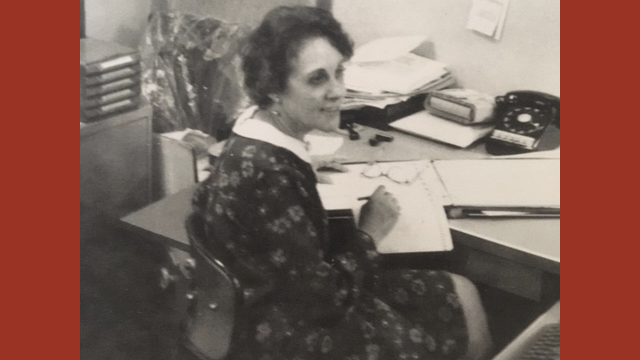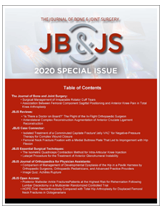


For the entire time The Journal of Bone and Joint Surgery has existed, orthopaedics has been a male-dominated field. Early promotion of the journal assumes its readers were entirely male, and John Reed’s “A Short History of the Journal”, written in 1961, begins by praising the “men who work for The Journal” and ruminating on the early days of JBJS as a labor of a “few…men who kept The Journal in existence.” But although poorly documented and often overlooked, women’s work has always been integral to the journal’s success.
In the early days of JBJS, the position of “Assistant Editor” was an informal one, designed to be filled by a woman reporting solely to the Editor. In 1926, the treasurer of the American Orthopaedic Association, Dr. John L. Porter, counselled Editor Eliott Brackett:
Officially there should be no Assistant Editor. The Assistant Editor should be a well trained, logical, level-headed stenographer…she should be your employee and selected by you. So far as everyone except the Editorial Committee is concerned, the Association and the subscribers should think of you as the sole Editor and solely responsible for the Journal.
At the time, the Assistant Editor position was filled by Hannah Lissner, but Dr. Porter viewed her as “a tempermental [sic], egotistic, Jewish woman who is not content to be Assistant Editor,” and she resigned in 1926. Her replacement was Florence Daland, whom Brackett praised as “a much higher-grade individual” than Lissner. In Daland’s first year on the job, Brackett wrote to Porter that her pay was “the same proportion which we paid Miss Lissner, although she probably has put in at least two or three times as much time and work.” Daland worked for JBJS for 23 years, from 1926 to 1955*. She was added to the masthead in 1933, flouting Porter’s original wish that the Assistant Editor position remain strictly unofficial. During her tenure she “was given the responsibility for all the detail of publishing and much of that of editing,” according to John Reed’s 1961 history. Reed praised Daland as “a staunch, even belligerent, defender of every iota of Journal standards and practice” whose service to the journal was “priceless”—literally, as “[her] salary never reflected her service.”
Gradually, women began to fill positions at JBJS besides Assistant Editor. Mady Tissenbaum worked at JBJS from 1977 to 2015, progressing from a copyeditor to Publisher and accumulating much institutional knowledge along the way. Mady’s era overlapped with that of Amy Bordiuk, who started at JBJS as a copyeditor in 1978 and is now the Associate Vice President of Publishing. In 2020, JBJS employs almost twice as many women as men and is steadily increasing the number of women on the editorial board, meaning that women continue to keep JBJS delivering excellence.
*According to John Reed, although her name disappeared from the masthead in 1947.

Sign up to receive your free JBJS 2020 Special Issue—a compilation of the most-read articles. You get twelve articles across six JBJS publications in this special issue.